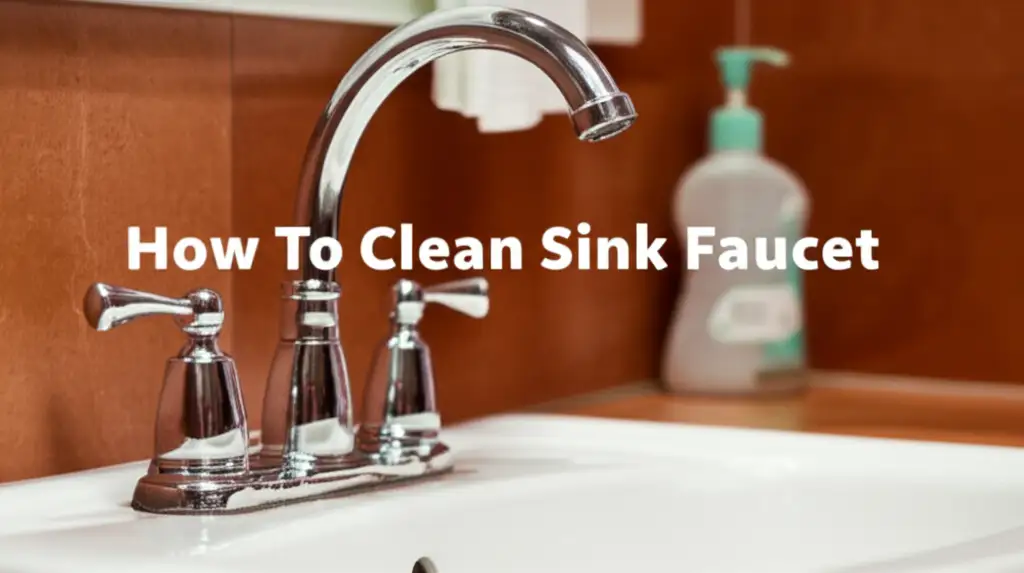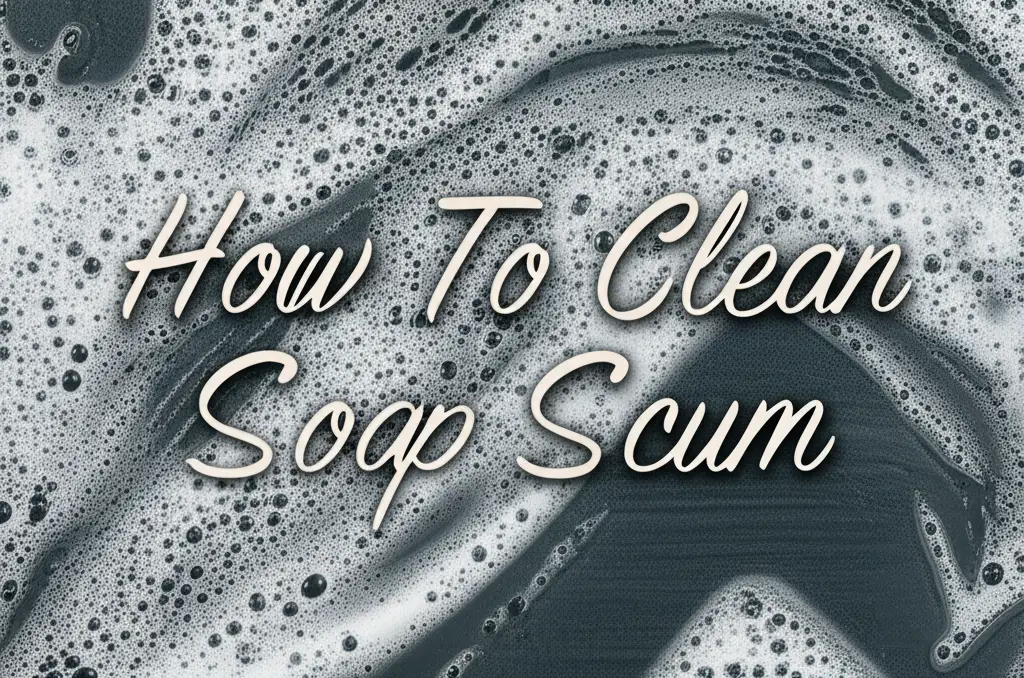· Home Cleaning, Plumbing Maintenance · 13 min read
How To Clean Sink Faucet

Sparkling Clean: How To Clean Sink Faucet Effectively
Is your sink faucet looking a bit dull? Maybe it has visible water spots or even some grime around the base. A clean sink faucet is not just about appearances. It also supports better hygiene in your kitchen or bathroom. Accumulated dirt and mineral deposits can harbor germs. I know how frustrating a dirty faucet can be when the rest of your sink sparkles.
This article provides simple steps to clean sink faucet surfaces. We will cover common issues like hard water stains and black gunk. You will learn about the right cleaning products and tools to use. I will also share tips for maintaining your faucet’s shine. Let’s make your faucet sparkle again.
Takeaway
Here is how you can achieve a truly clean sink faucet:
- Gather the right tools and gentle cleaners.
- Address surface dirt before tackling tough stains.
- Use natural solutions like vinegar for mineral buildup.
- Pay attention to specific faucet finishes.
- Perform regular light cleaning to prevent heavy accumulation.
To clean a sink faucet, first, gather gentle cleaning agents like dish soap, vinegar, and a soft cloth or toothbrush. Apply the cleaner, scrub away surface dirt and mineral deposits, paying attention to the spout and base. Rinse thoroughly with clean water and dry immediately to prevent new water spots, leaving your faucet sparkling.
Why Your Faucet Needs Regular Cleaning
Faucets are one of the most used fixtures in any home. We touch them multiple times a day. This constant contact means they collect dirt, germs, and soap residue. Over time, hard water deposits also build up. These mineral stains leave a dull, chalky film on the surface.
Ignoring a dirty faucet can lead to several problems. It can become a breeding ground for bacteria. This impacts the hygiene of your kitchen or bathroom. Visible grime also detracts from your home’s appearance. Regular cleaning keeps your faucet sanitary and shiny. It also extends its lifespan. You prevent permanent etching from mineral buildup. I make sure to clean mine often for these reasons.
Preventative cleaning saves effort later. Small stains are easier to remove than thick layers of grime. A regular wipe-down can prevent most issues. This keeps your faucet looking its best without much hassle. We want a faucet that looks as good as it functions.
Essential Tools and Cleaning Solutions
Before you start cleaning, gather your supplies. Having everything ready saves time. You do not need harsh chemicals for most faucet cleaning. Gentle, everyday items often work best. I always start with the mildest options.
Here are the basic tools and solutions you will need:
- Soft cloths or microfiber towels: These are essential for wiping and polishing. They prevent scratches on delicate finishes.
- Old toothbrush or small brush: These tools reach tight spots around the faucet base. They are great for scrubbing crevices.
- Dish soap: A mild dish soap mixed with water is perfect for general cleaning. It cuts through grease and light grime.
- White vinegar: This is a miracle worker for hard water stains and mineral buildup. Its acidic nature dissolves deposits effectively.
- Spray bottle: This helps apply vinegar or soap solution evenly.
- Baking soda: A paste of baking soda and water can gently scrub stubborn spots. It is a mild abrasive.
- Lemon halves (optional): These provide natural acidity and a fresh scent. They can be rubbed directly on stains.
Avoid abrasive scrubbers or strong chemical cleaners. These can damage your faucet’s finish. Always test new cleaners in an inconspicuous spot first. This prevents any unintended damage. Using the right tools protects your investment.
Step-by-Step Guide: Cleaning Your Faucet
Let’s get into the cleaning process. This general method works for most faucet types. We will cover specific issues later. Start by clearing any items around your sink. This gives you space to work.
General Surface Cleaning
Begin with a simple wipe-down. This removes loose dirt and fingerprints.
- Dampen a soft cloth: Use warm water for this step.
- Add a few drops of mild dish soap: Mix it into the water or apply directly to the cloth.
- Wipe down the entire faucet surface: Include the handles, spout, and base. Gently scrub any visible grime.
- Rinse the cloth: Use clean water to rinse your cleaning cloth.
- Wipe down the faucet again: This removes any soap residue.
- Dry thoroughly: Use a separate, dry microfiber cloth. Drying prevents water spots.
This simple cleaning should be a regular part of your routine. It keeps daily grime from building up. I do this every few days.
Tackling the Faucet Aerator
The aerator is the screen at the tip of the spout. It mixes air with water for a smooth flow. This part often collects mineral deposits and debris.
- Unscrew the aerator: Most aerators twist off counter-clockwise. You might need pliers wrapped in a cloth for grip.
- Inspect for debris: Look for small particles or mineral chunks.
- Soak in vinegar: Place the aerator in a small bowl of white vinegar. Let it soak for 30 minutes to an hour. For severe buildup, soak it overnight. If you prefer to clean the aerator without removing it, consider solutions found at how to clean faucet aerator without removing.
- Scrub gently: Use an old toothbrush to scrub away dissolved deposits. Make sure to clean the mesh screens thoroughly.
- Rinse with water: Rinse all parts under running water.
- Reassemble: Screw the clean aerator back onto the faucet. Test the water flow. If you have a Delta faucet, specific guidance for its aerator can be found here: how to clean delta faucet aerator. This helps maintain proper water pressure and quality.
Tackling Stubborn Hard Water Stains and Mineral Buildup
Hard water stains are a common faucet problem. They appear as cloudy white or yellowish spots. These are mineral deposits from water evaporation. Vinegar is your best friend here. It breaks down these deposits.
Vinegar Soak Method
For general hard water stains, a vinegar soak works wonders.
- Prepare your vinegar: Pour white vinegar into a spray bottle. You can dilute it slightly with water for lighter stains.
- Apply to the faucet: Spray the affected areas generously. Ensure the stains are fully saturated.
- Let it sit: Allow the vinegar to sit for 15-30 minutes. For very stubborn buildup, extend the time to an hour.
- Scrub with a soft brush: Use your old toothbrush or a soft cloth to scrub the softened stains. You will notice them starting to disappear.
- Rinse thoroughly: Rinse the faucet completely with clean water.
- Dry immediately: Wipe dry with a microfiber cloth to prevent new spots.
Vinegar Compress for Heavy Buildup
Sometimes, stains are too thick for a spray. This method uses a vinegar compress.
- Soak paper towels or cloths: Saturate several paper towels or a small cloth with white vinegar.
- Wrap the faucet: Wrap the vinegar-soaked paper towels around the stained areas. Focus on the base and spout.
- Secure with rubber bands: Use rubber bands to hold the compresses in place if needed.
- Leave overnight: For very heavy mineral buildup, leave the compress overnight.
- Remove and scrub: Take off the compresses. Scrub the remaining softened buildup with a brush.
- Rinse and dry: Rinse the faucet thoroughly and dry it completely.
This method is especially effective for thick rings of calcium. It breaks down even the most stubborn deposits. For more general advice on dealing with buildup on your faucet, check out how to clean build up on faucet.
Dealing with Mold and Gunk Around Your Faucet Base
Black gunk or mold often appears around the faucet base. This area stays damp, making it a perfect breeding ground. It can look unsightly and even be a health concern. Addressing this quickly is important.
Removing Black Gunk and Mildew
The combination of moisture and soap scum encourages growth.
- Create a cleaning paste: Mix baking soda with a small amount of water to form a thick paste. You can also add a few drops of dish soap.
- Apply the paste: Generously apply the baking soda paste to the black gunk. Cover the affected areas around the faucet base.
- Let it sit: Allow the paste to sit for 10-15 minutes. This helps loosen the grime and absorb odors.
- Scrub with a toothbrush: Use an old toothbrush to scrub the gunk. The baking soda acts as a gentle abrasive. Focus on crevices and seams.
- Rinse thoroughly: Rinse the area with clean water. Make sure all paste and loosened gunk are gone.
- Dry completely: Dry the faucet base and surrounding sink area. Preventing moisture is key to preventing re-growth.
For specific details on how to clean black gunk, you might find this article helpful: how to clean black gunk from faucet. If you notice mold spreading to areas like under the sink, additional steps might be needed, which you can find guidance for at how to clean mold under sink.
Disinfecting and Preventing Recurrence
After cleaning, it’s good to disinfect. This kills any remaining spores.
- Use hydrogen peroxide or a diluted bleach solution: For a natural option, spray 3% hydrogen peroxide. For stronger action, mix 1 part bleach with 10 parts water. Always wear gloves.
- Apply and let sit: Spray or wipe the solution on the cleaned area. Let it sit for 5-10 minutes.
- Rinse well: Rinse with plain water to remove all disinfectant residue.
- Ensure ventilation: Keep the area well-ventilated during and after using bleach.
- Keep dry: The most important prevention step is to keep the area dry. Wipe down the faucet and sink base after each use. This removes moisture that mold thrives on.
Special Care for Different Faucet Finishes
Not all faucet finishes are the same. What works for chrome might harm a matte black finish. Knowing your faucet’s material is important. Always use gentle products.
Chrome and Stainless Steel Faucets
These are common and durable. They tolerate most general cleaners.
- Cleaning: Use mild dish soap and water. Vinegar is safe for hard water stains.
- Polishing: After drying, buff with a dry microfiber cloth. This enhances shine.
- Avoid: Abrasive pads, harsh chemicals, or steel wool can scratch the surface. If you also have a stainless steel sink, remember similar care principles apply, as detailed at how to clean stainless steel sink.
Brushed Nickel and Satin Finishes
These have a muted look. They are more prone to showing fingerprints and water spots.
- Cleaning: Stick to mild soap and water. Wipe in the direction of the grain.
- Water Spots: For stubborn spots, a slightly damp cloth with a tiny bit of vinegar can work. Rinse immediately.
- Avoid: Never use abrasive cleaners or scouring pads. These can damage the finish’s texture. Wiping with baby oil can help hide minor imperfections.
Matte Black Faucets
Matte black is popular but requires specific care. It shows smudges easily.
- Cleaning: Use only mild, non-abrasive cleaners. Dish soap and water are ideal. Wipe with a soft microfiber cloth.
- Water Spots: Dry thoroughly after every use. Hard water can leave visible marks. For detailed care, see how to clean matte black faucet.
- Avoid: Vinegar, citrus-based cleaners, and harsh chemicals. These can strip the finish and cause discoloration. Even rubbing alcohol should be used with caution.
Oil-Rubbed Bronze Faucets
This finish is designed to age gracefully. It often has a protective layer.
- Cleaning: Use only a soft cloth and warm water with mild soap.
- Protecting: Some manufacturers recommend waxing or oiling to maintain the finish. Always check your faucet’s specific care instructions.
- Avoid: Acids like vinegar or lemon. Abrasive cleaners will damage the patina. For more specific cleaning strategies, explore how to clean oil rubbed bronze faucet. Harsh chemicals will destroy the finish.
Always refer to your faucet’s manufacturer guidelines. When in doubt, always test cleaners in a hidden spot first. This protects your investment.
Maintaining Faucet Shine: Preventative Tips
Cleaning your faucet is one thing. Keeping it shiny is another. Regular maintenance makes future cleanings much easier. These preventative steps are simple but effective.
Daily Wiping Down
The easiest and most important tip is a quick wipe.
- After each use: Use a soft, dry cloth. Quickly wipe down the faucet handles and spout. This removes water droplets before they dry and form spots.
- Keep a dedicated cloth: I keep a small microfiber cloth near my sink. This reminds me to wipe it down.
- Focus on high-splash areas: Pay extra attention to areas where water splashes most often. This prevents mineral buildup.
This daily habit takes only a few seconds. It makes a huge difference in preventing unsightly water marks.
Addressing Spills Immediately
Don’t let spills dry on your faucet.
- Clean immediately: If anything splashes on the faucet, wipe it off right away. This includes toothpaste, soap, or food particles.
- Avoid sticky residues: Dried spills can become difficult to remove. They also attract more dirt.
Immediate action prevents stains from setting in. This applies to your sink as well, where immediate cleaning prevents many issues.
Using Water Softeners (If Applicable)
If you have very hard water, consider a water softener.
- Reduce mineral content: A water softener removes minerals like calcium and magnesium. This reduces hard water stains on all fixtures.
- Benefits: It not only protects your faucet but also appliances and pipes.
- Consult a professional: Consider professional installation for a whole-house system. This is a bigger investment but can save a lot of cleaning effort.
Even without a softener, consistent wiping is crucial. These small habits make maintaining a clean faucet effortless. They ensure your faucet stays sparkling longer.
Frequently Asked Questions
How often should I clean my sink faucet?
You should wipe down your sink faucet daily after use to prevent water spots and soap scum buildup. A more thorough cleaning, including descaling and addressing grime, is recommended weekly or bi-weekly. Deep cleaning prevents mineral accumulation and keeps your faucet hygienic and shiny.
What is the best way to remove hard water stains from a faucet?
The best way to remove hard water stains is using white vinegar. Soak paper towels in vinegar and wrap them around the stained areas for 30 minutes to a few hours. Then, scrub with a soft brush and rinse thoroughly. For a quick clean, spray vinegar directly on stains and wipe.
Can I use bleach to clean my faucet?
You can use a diluted bleach solution (1 part bleach to 10 parts water) to disinfect some faucet finishes, like chrome. However, avoid bleach on sensitive finishes like matte black, oil-rubbed bronze, or brushed nickel as it can damage or discolor them. Always test in an inconspicuous area first.
How do I clean the inside of my faucet spout?
To clean the inside of your faucet spout, you need to address the aerator. Unscrew the aerator and soak it in white vinegar to dissolve mineral deposits. Use a small brush, like an old toothbrush, to scrub away any loosened debris. Rinse it well and reassemble the aerator.
What causes black gunk around the faucet base?
Black gunk around the faucet base is usually mold or mildew, combined with soap scum and moisture. This area often remains damp, creating a perfect environment for growth. Regular cleaning with a baking soda paste and ensuring the area stays dry after use helps prevent its formation.
Is vinegar safe for all faucet finishes?
Vinegar is safe for most chrome and stainless steel faucets. However, it is not safe for all finishes. Avoid using vinegar on matte black, oil-rubbed bronze, and sometimes brushed nickel finishes. Vinegar’s acidity can damage or dull these specific coatings. Always check manufacturer recommendations.
Conclusion
Keeping your sink faucet clean is a simple task that offers big rewards. It means a more hygienic home environment. It also adds a touch of shine to your kitchen or bathroom. We explored general cleaning steps for how to clean sink faucet surfaces. We also looked at tackling common issues like hard water buildup and black gunk. Remember, the key is regular care.
By choosing the right cleaning agents for your faucet’s finish, you ensure longevity and beauty. Daily wiping and addressing spills quickly prevent bigger problems later. I encourage you to make faucet cleaning a regular part of your home routine. A little effort goes a long way. Enjoy your sparkling clean sink faucet.
- faucet cleaning
- hard water stains
- kitchen faucet
- bathroom faucet
- faucet maintenance
- cleaning tips




